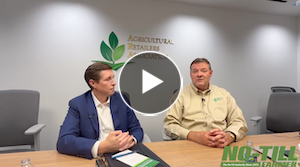Takeaways
- Gaining the perspective of others provides alternative solutions
- More, not less, collaboration will advance ag’s interests
- Knowing what your colleagues in other areas of ag are working on can calibrate and refine your own approach
For the first time in years, I attended a business media summit in Washington D.C. I was the only ag guy in a room full of mostly financial publishers. That was the plan; I was there to learn what others outside of ag and machinery B2B were thinking about their content, software, audience development trends and licensing models.
Before COVID, I was in D.C. annually for peer group meetings. There was also a time 20-some years ago that I logged a lot of nights in our nation’s capital. I’d worked for a trade association and, for nearly a decade, reported on legislation and regulatory issues while accompanying execs on their Hill visits. It was lobbying for sure, but I also saw well-intended efforts to develop better rules, not just stop them.
So I hung around an extra day this time to see organizations that might be out of our normal field of vision. While AEM and AED are working on national machinery business issues, I wanted to hear from some groups who might not show up on your radar since their missions are tangential to your business.
My 19-year-old son (and summer intern), Hayden, joined me, which also drew thought-provoking questions — during our museum and monument stops, the summit, a business dinner with software execs, and the 4 ag group visits that followed.
He was at the ready with the camera and mics, and you can watch his executive interviews at www.Farm-Equipment/2025DCvideos
Ag Retailers Assn. Darren Coppock and Hunter Carpenter explained the recent work that the group did with the Endangered Species Act so farmers can continue to safely use the products needed to keep pests at bay. The group is also working on the Farm Bill and 5-year authorizations to remove paralysis and uncertainty.
The Fertilizer Institute. Kathy Mathers and David Townsend explained a biostimulant certification program, a new Nutrient Use GIS system to examine actual on-farm fertilizer activity and transportation lobbying to ensure an efficient last mile of delivery of nutrients. TFI also oversaw a tariff exemption for the 90% of potash that originates in Canada. The group is well on its way toward the goal of 70 million acres of nutrient stewardship by 2030.
Field to Market. Kelsey Billings discussed the regenerative ag organization’s FieldPrint on-farm tool to track progress in 8 environmental metrics. The group also released a guidance document to bring clarity about what “regenerative ag” means, especially to the supply chain that is increasingly examining how food products are grown.
National Assn. of Conservation Districts. Jeremy Peters discussed the 90-year-old group’s impact on the food system via the work of 3,000 conservation districts and 17,000 board governors. “Had the Soil Conservation Service (now NRCS) and the conservation districts not been formed, the severe erosion trend of the 1930s would’ve continued,” he says. “We wouldn’t have that topsoil for our food supply.” The impact of the farmer-led groups is not lost on us, as we know the vital role that local champions have played in every key change in farming.
After 21 years of near-exclusive attention on farmers, equipment OEMs and machinery dealers, I’m moving in some new circles for the first time in my new role as President of the Conservation Ag Foundation. Some light bulbs are starting to turn on, and I think I’ve seen a similar response from those getting interesting questions from an outsider.
Each of these groups has annual meetings and ample opportunities that I hope to leverage moving forward. I’m noting where common efforts are being duplicated. And where voids may exist for us and our audiences to add value to the conversation.
As is commonly said, all agriculture, and all special interest for that matter, is local. But there’s a lot more to be accomplished by working together. But first, we must be willing to open our eyes to that which surrounds us.
Related Content: Lessiter Media Washington D.C. Interviews, June 2025










